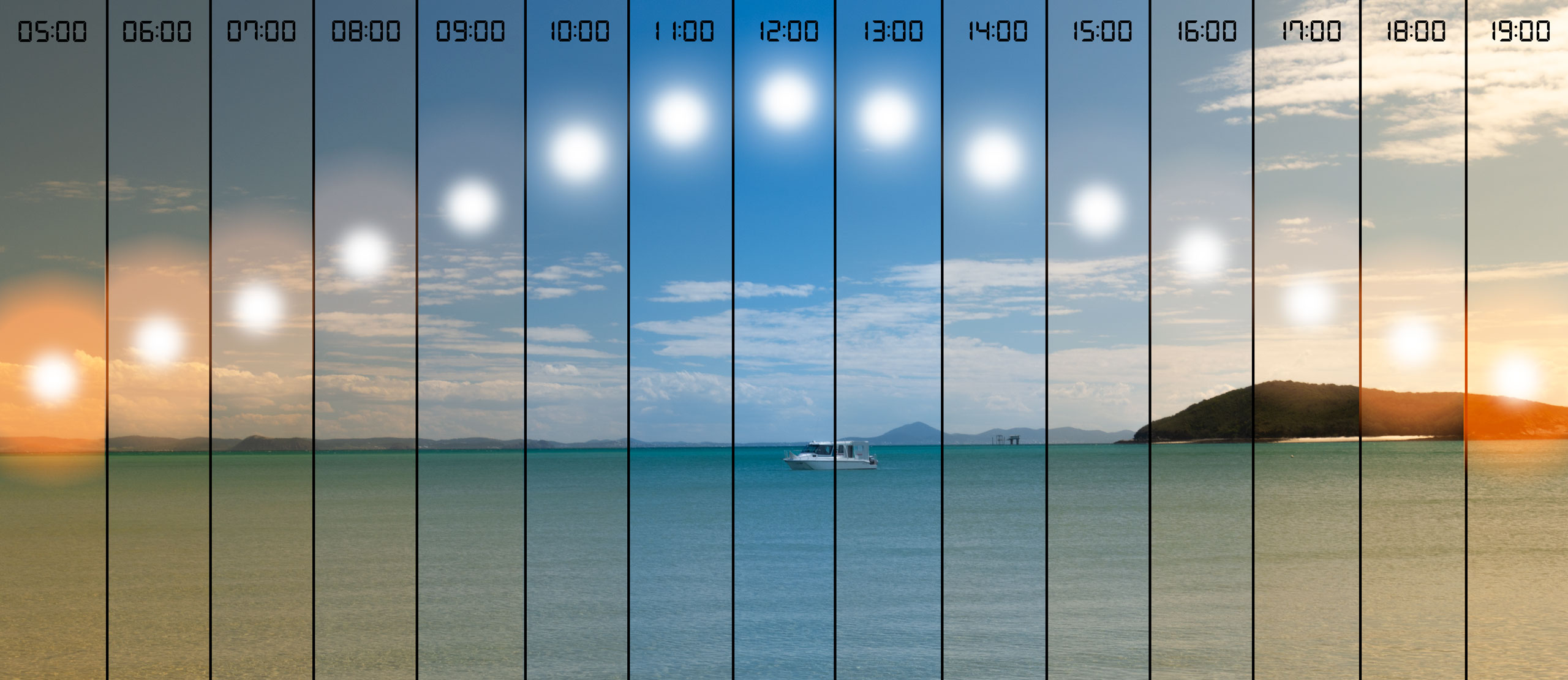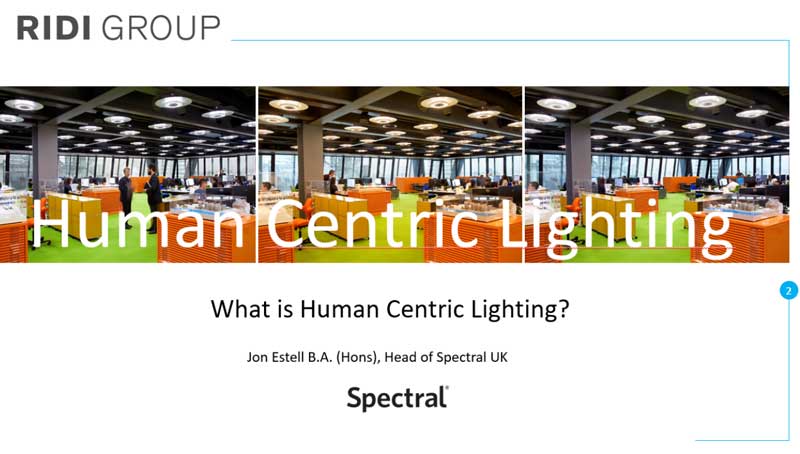What is Well Light?
Biologically effective lighting refers to our biological clock. This clock is governed by night and day and our emotional response to it is affected by the amount and colour of the daylight.
Human centric lighting (Circadian lighting) aims at providing a type of ‘daylight progression’ with different sources, directivities, colour temperatures and illuminances, to provide a form of compensation for humans that typically suffer from lack of access to daylight.
Why do we achieve it?
The natural circadian rhythm of a person can be supported by using warmer (relaxing) light with lower intensity in the morning and evenings, and cooler (energizing) light during a typical working day.
As we begin the working day we need a higher intensity of blue white light to stimulate us. This enables concentration into lunchtime and afternoon. Later into the evening we need to warn up the white light. To recreate internal lighting that mirrors our natural external environment is the challenge facing most interior designers. Modern day LED lighting allows us to more accurately replicate nature than ever before.

How do we apply it?
Lighting is a fundamental issue in healthy building design. When specifying lighting, we should now consider recent research on lighting’s influence on occupants while still be mindful of adhering to codes aimed at conserving energy and good lighting design.
Consider the way the sun rises in the morning and descends at night and the colour range it goes through during that period. With the aid of carefully designed and commissioned software and hardware, a building can be programmed to replicate these conditions and make the necessary seasonal adjustments.

Why is the right light essential?
In order to understand the various lighting criteria and their relationship with visual performance and comfort it is necessary to understand how we view our environment. Glare is the most potentially disturbing aspect of electronic light. This means we either must strictly control the glare or provide a uniformly lit all-round environment that allows the perceived brightness of the luminaire to be reduced. The latter does lead to a more potentially restful and mellow interior if an appropriately well designed luminaire is selected.
Where can we apply it?
The Workplace
Studies have shown that a Wellbeing approach to lighting in the work environment leads to staff having improved health and concentration. The process can be automated to reproduce a natural Circadian Rhythm but it is equally essential to allow the staff the ability to sometimes chose to override. Here at RSHP Architects offices in the City of London, it was essential that staff also have the ability to override and set scenes depending on the task involved. The software runs in the background to provide a discrete transition during the day.
Education
Modern well-designed LED lighting can assist students to overcome early-morning tiredness and boost alertness and concentration levels throughout the day. Given a correctly designed environment, students should feel invigorated and positive when working under a human centric lighting scheme. The right lighting can support the circadian needs of pupils and staff to create well-being and improved cognitive performance in schools. The project shown here is the University Library in Freiburg. The lighting system was designed to provide a restful working environment that could feel energising in both summer and winter.
Public Spaces
Though mainly considered for workspace interiors, public spaces can benefit greatly from a circadian lighting approach. Leeds Central Station concourse, the UK’s 3rd busiest station outside London, is the first public station in the UK to adopt Circadian Lighting. The concept allows passengers to experience the same effect inside the station as that of the natural light patterns, resulting in the body clock remaining in sync and encouraging positive moods. This also benefits the station staff and retail workers too.
Flexible and multi-use spaces
Flexible spaces can use different aspects of tunable light to create different moods and tones. At Atelier Turke advertising agency nr Stuttgart, a striking glass box construction was constructed within the walls of an old factory. The tunable lighting system and control interface supplied by RIDI Group allows them to easily set tones for the various events hosted from conferences to exhibitions. The right colour tone can have a positive impact on the specific task required.
Find out More
RIDI Group offer a RIBA accredited CPD on Human Centric Lighting that can be delivered in your practice or via Webinar. Contact RIDI Group to book us in.


